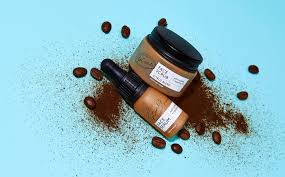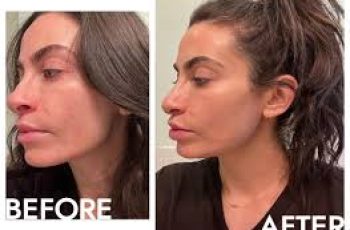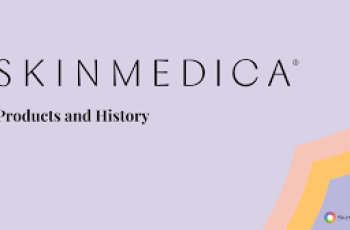
Caffeine in skin care
Caffeine is used in skin care products to treat skin aging and facial redness. It is a natural ingredient found in many medicinally valuable plants like various teas and coffee.
In skin care, caffeine is used as an antioxidant, anti-inflammatory ingredient specifically targeting conditions like sensitive skin and rosacea where vasoconstriction (shrinking your blood vessels) would be beneficial.
Caffeine does not dry out the skin, cause acne, or carry any other significant risks in skin care. It is considered very safe for treating many skin concerns.
Take our quiz to find out if caffeine is a good addition to your custom skin care regimen!
What is caffeine?
Caffeine is a plant based compound in the methylxanthine family; it is related to xanthine. It is a stimulant that interferes with adenosine receptors.
Caffeine can be found in countless varieties of teas, coffees, and other plants which make it one of the most common antioxidants and anti-inflammatories people consume in their diets regularly.
Despite the similar names, caffeine is actually completely unrelated to caffeic acid.
Caffeine is not composed of any fatty acids, flavonoids, or any additional compounds. It has a neutral pH.
It is not an oil, an essential oil, nor is it an acid. It is simply a chemical compound.
Here’s what Caffeine looks like:
Caffeine
Absorption
Caffeine is able to effectively penetrate and absorb into the skin when applied topically. (1) As a small hydrophobic molecule, caffeine can rapidly cross the stratum corneum outer barrier and enter the epidermis and dermis. Studies show that within 5-10 minutes, over 99% of the applied caffeine permeates the skin and becomes bioavailable to exert its effects. Caffeine is moderately lipid-soluble, allowing it to partition into the lipids that make up the skin’s permeability barrier. However, caffeine is also water-soluble which enables it to then dissolve into the aqueous environments inside and between cells. Once in the skin layers, caffeine diffuses rapidly due to its low molecular weight. The high absorption rate and solubility profile allow topical caffeine to achieve therapeutic concentrations throughout the cutaneous tissues. Levels of caffeine in the epidermis and dermis have been shown to exceed serum concentrations from oral intake. These factors make caffeine an ingredient well-suited for use in topical skincare formulations.
Reactions with Other Ingredients
Caffeine can be readily formulated into a variety of skincare products. As a crystalline powder, caffeine dissolves well in water, propylene glycol, and other solvents suitable for cosmetic formulations. Caffeine has high thermal stability, allowing it to be incorporated in products requiring heat processing or pasteurization. It is chemically compatible with most cosmetic ingredients and maintains stability across a wide pH range. Caffeine’s low reactivity also makes it resistant to oxidation and degradation when formulated with antioxidants like vitamin C and vitamin E. However, caffeine can interact with select amino acids and proteins, so evaluating compatibility is recommended when combining with peptide ingredients. With its favorable solubility, stability, and safety profile, caffeine presents few obstacles during the product development process. The typical use level is 1-5% caffeine in finished skincare preparations. Overall, caffeine is a versatile and straightforward active ingredient to formulate for a broad range of anti-aging, antioxidant, and skin-firming applications.
Here are some examples of amino acids and peptides that caffeine may interact with in skincare products:
Arginine – Caffeine can form complexes with arginine, reducing the availability of both compounds. This interaction is pH-dependent.
Glycine – Caffeine binds to glycine, making less glycine available for other functions. This can disrupt creams containing glycine.
Proline – Caffeine reacts with proline, especially in neutral pH conditions. This can reduce the effectiveness of proline-containing peptides.
Glutathione – Caffeine binds to the cysteine residues in glutathione through disulfide bridges. This may interfere with glutathione’s antioxidant effects.
Copper peptides – Caffeine can chelate copper ions and disrupt copper peptide complexes and their benefits for skin.
Tyrosine – Caffeine coupling to tyrosine may impair tyrosine’s role as a building block for melanin and other proteins.
Ascorbic acid – Caffeine oxidation is accelerated by ascorbic acid, potentially reducing the efficacy of both compounds.
So in summary, caffeine appears most likely to interact with amino acids and peptides containing sulfur groups, aromatic rings, and acidic or basic side chains. Do not use caffeine containing products with other skin care products in your routine that contain peptides.
How does it work?
The two main functions of caffeine in skin care are as an anti-inflammatory and an antioxidant.
The first thing to understand about caffeine is how it expresses anti-inflammatory benefits.
The antioxidant function of caffeine comes from its structure; the chemical has endpoints which can bind and eliminate free radicals.
Look at the structure of caffeine above to see how the shape of caffeine helps it bind free radicals.
Anti-inflammatory Benefits
Caffeine also exhibits anti-inflammatory activities that can benefit skin health. Studies show that caffeine is able to suppress inflammatory pathways by blocking receptors like A2A receptors and inhibiting enzymes like COX-2. This leads to decreased production of pro-inflammatory cytokines like IL-6 and TNF-alpha. The anti-inflammatory effects of caffeine are mediated in part through vasoconstriction. By constricting blood vessels, caffeine reduces edema and accumulation of inflammatory cells and mediators. This mechanism helps reduce redness, swelling, and puffiness associated with inflammatory skin conditions. The vasoconstrictive effects of caffeine also promote drainage of excess fluids and waste products generated during the inflammatory cascade. Furthermore, the free radical scavenging activity of caffeine provides additional anti-inflammatory effects by neutralizing oxidative stress, a key trigger of inflammation. The combination of direct cytokine inhibition, vasoconstriction, and antioxidant activity allows topically applied caffeine to disrupt multiple parts of the inflammatory process for an improved anti-inflammatory outcome.
Antioxidant Benefits
Caffeine is a potent antioxidant that can help protect skin from damage caused by free radicals and oxidative stress. Caffeine neutralizes reactive oxygen species (ROS) like superoxide anions and hydroxyl radicals through donating electrons. This prevents the ROS from initiating chain reactions that damage cell lipids, proteins, and DNA. Caffeine also boosts the body’s natural antioxidant defense system by increasing the expression of endogenous antioxidant enzymes like glutathione S-transferase and catalase. These enzymes further enhance the skin’s ability to deactivate ROS within cells. In addition, caffeine is able to regulate the redox-sensitive transcription factor Nrf2, which turns on genes involved in the antioxidant response. Through these combined mechanisms, topical caffeine strengthens the skin’s protection against UV radiation, pollutants, and other environmental oxidants that generate free radicals. By neutralizing ROS and augmenting antioxidant defenses, caffeine provides anti-aging and photo-protective benefits that can reduce signs of premature skin aging caused by oxidative damage.
How does caffeine work
What does caffeine do for your skin?
Caffeine’s benefits in skin care include antioxidant, anti-cellulite, anti-inflammatory, and anti-aging capabilities.
Some studies have shown promising results that caffeine might be useful in preventing certain kinds of skin cancer. (2,3)
Specifically, this study found that UVB induced carcinogenesis was particularly inhibited by caffeine.
That being said, more research is always needed for cancer treatments and caffeine is not a miracle cure for any variety of tumor.
Caffeine soothes inflammation, so is commonly found in treatments for rosacea, eczema, acne, and many other inflammation related concerns.
Caffeine is effective at binding and eliminating various kinds of free radicals on the skin, meaning it is a good antioxidant. (4)
This ingredient provides anti-inflammatory benefits through vasoconstriction, the shrinking of enflamed blood vessels. By shrinking blood vessels, the apparent redness of the face as well as swelling is reduced.
Caffeine is not moisturizing or tyrosinase inhibiting, and is only considered antimicrobial in high concentrations. For those reasons, the primary uses of caffeine in skin care are in inflammation and anti-aging treatments.
Caffeine Increases Autophagy in Skin
Skin aging is caused in part by cellular damage from oxidative stress. One way skin cells normally remove damaged structures is through autophagy. Autophagy is like the cell’s recycling system that breaks down and removes the damaged parts. As we age, autophagy becomes less efficient. Topical caffeine applied to the skin can help boost autophagy.(12)
Caffeine increases autophagy by interacting with receptor proteins on skin cells called A2ARs. This sets off a chain reaction that activates proteins called SIRT3 and AMPK. These proteins work together to stimulate the autophagy recycling system. With a boost in autophagy, the skin cells can clear out more toxic free radicals and damaged structures that accumulate with age.
Removing the damaged cell parts helps prevent the cells from entering senescence, which is a state of dormancy cells adopt when overly damaged. In this way, increasing autophagy with topical caffeine protects skin from aging-related changes induced by oxidative stress and senescence. Through simple application to the skin, caffeine can activate the cells’ own protective mechanisms against environmental damage.
Facial Redness and Rosacea
Caffeine is a vasoconstrictor, meaning it causes blood capillaries and vessels to become narrower. This reduces blood flow close to the surface of the skin. Restricting blood flow to superficial capillaries can help diminish facial redness and visible capillaries that contribute to rosacea and a flushed complexion.
By promoting vasoconstriction in facial capillaries, topical application of caffeine can improve the appearance of skin prone to redness, rosacea, and under-eye bags.
Puffy Eyes and Under Eye Bags
The vasoconstrictive properties of caffeine also decrease puffiness and under-eye circles related to dilated blood vessels.
Cellulite
Cellulite forms when fat cells accumulate excess fluids and push up against the skin, creating a dimpled appearance. Caffeine and related compounds like theophylline and aminophylline belong to the methylxanthine class and have been shown to help reduce the appearance of cellulite. When applied topically, these methylxanthines penetrate the skin and inhibit phosphodiesterase activity in fat cells. This prevents the breakdown of cyclic AMP, which causes the fat cells to release their stored triglycerides and fluid. This helps shrink the fat cells and drain excess fluid, smoothing the puckered appearance of cellulite. The methylxanthines also stimulate the release of fat for energy metabolism. The combined actions of reducing fluid accumulation in fat cells and mobilizing fat break down lead to a reduction in the visible dimpling effect of cellulite. Topical creams containing caffeine or aminophylline are an accessible way to improve the appearance of cellulite on the thighs, buttocks, and stomach.
What does caffeine do for your skin
Side-effects
There are very few notable side-effects associated with use of caffeine in skin care, and an allergy is uncommon.
Caffeine is a stimulant, which means use can result in jitteriness, mild nausea, diarrhea, and headache.
These are the same general side-effects you might expect when having too many cups of coffee for breakfast.
Overall, caffeine is not something to be fearfully avoided in skin care, but it still might not be best for everyone’s skin type. To see if caffeine is right for your custom skin care regimen, take our quiz and shop by your Baumann Skin Type!
Take the Quiz
Is it safe?
Caffeine is considered the most common antioxidant in the average persons diet. It is present in dozens of common edible plant species and has never demonstrated significant health risks in topical uses.
If you have concerns of recurring inflammation, sun damage, or enflamed acne, caffeine can be a perfectly safe and effective choice for many skin types.
The CIR (Cosmetic ingredient review) concluded that caffeine and other methylxanthines like theobromine and theophylline are safe for use in cosmetic formulations. (8)
The EWG gives caffeine a score of 1.
Caffeine is usually considered a clean ingredient.
Overall, caffeine is considered a very safe ingredient for use in skin care.
Caffeine for inflammation
Inflammation
Caffeine is very effective for treating inflammation because it constricts blood vessels that cause redness when dilated. In other words, it is a vasoconstrictor.
Inflammation and redness is a common skin concern, and is one of the main concerns associated with rosacea.
For this reason, caffeine is good for rosacea treatments.
Anti-inflammatories are great for acne prone, dry, or sensitive skin types.
Wrinkles
As a potent antioxidant, caffeine is a good choice for many anti-aging and wrinkle treating regimens.
One of the main causes of aging is free radicals on the skin which lead to genetic damage and wrinkles. Since caffeine binds and eliminates many kinds of free radicals, it protects the skin from aging.
Like most other anti-aging ingredients, caffeine is most effective when used in combination with other anti-aging ingredients that have supplemental benefits like collagen synthesis stimulation.
Some great anti-aging ingredients to use alongside caffeine in skin care are:
Coenzyme Q10
Hyaluronic acid
Retinoids
Vitamin C
Acne
Caffeine can be used in acne treatments for its anti-inflammatory benefits. It is not comedogenic.
Caffeine is not significantly antimicrobial, so it does not eliminate acne causing bacteria on the skin.
It is not particularly useful for exfoliating clogged pores or removing sebum from the skin.
The best acne treating ingredients are antimicrobial, either too acidic or too alkaline for bacteria, exfoliating, non-comedogenic, as well as anti-inflammatory.
For those reasons, there are better options to consider if you are looking for natural acne treatments. Some great natural compounds for treating acne are:
Azelaic acid
Eucalyptus oil
Lavender oil
Marula oil
Peppermint oil
Tea tree oil
Products
Before you buy skin care products, be sure to find out your Baumann Skin Type so you can get custom, dermatologist recommended skin care regimens tailored to your specific needs.
Once you’ve found your skin type, check out some of our favorite skin care products containing caffeine!
Thanks for checking out this blog! We hope you’ve gained some valuable tools to make finding your next favorite skin care products a little easier!


